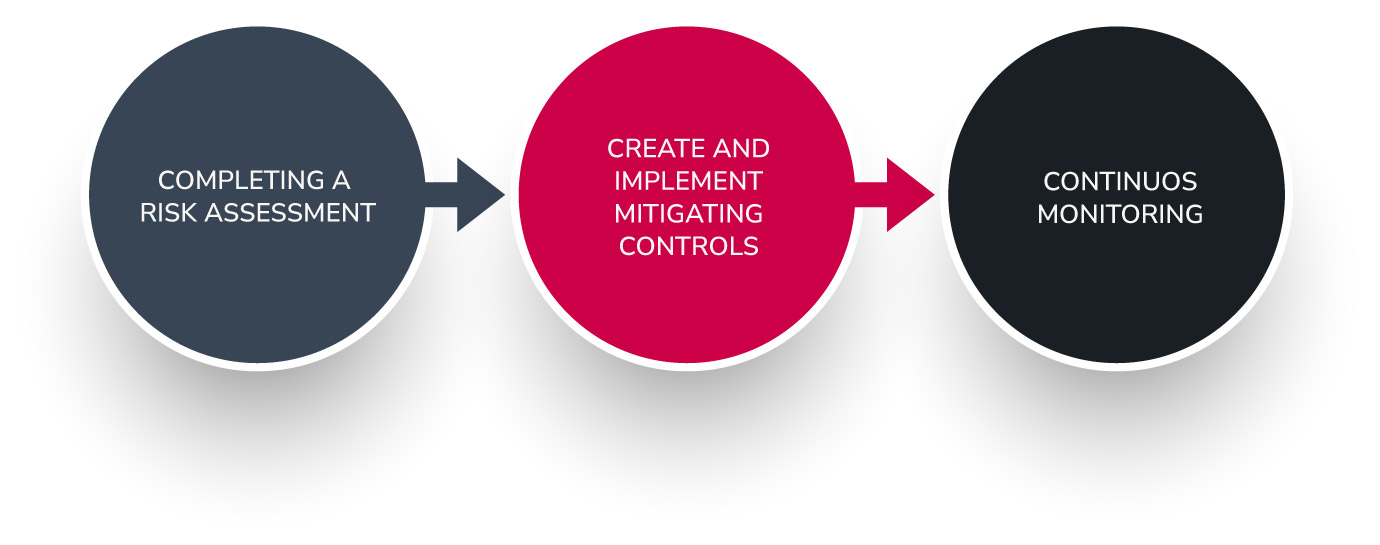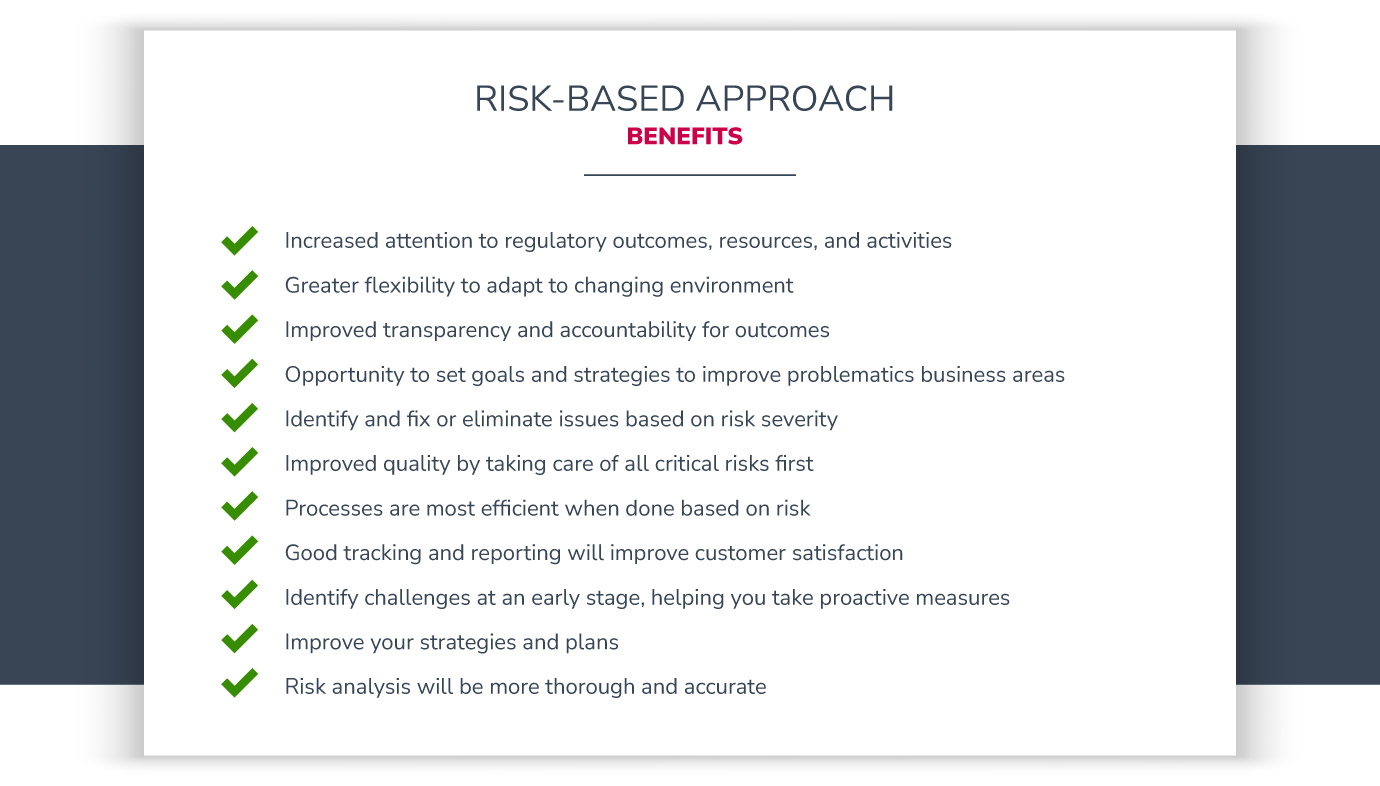A risk-based approach (RBA) enables you to identify risks and prioritize them based on potential impact and likelihood, leading to the creation of mitigating controls and policies.
Why is this key?
Because organizations — like yours — deal with risks daily. Although you could accept some risks as part of everyday operations, others can be fatal to your organization’s strategy and success.
This article will explain why a risk-based approach is so relevant, how it’s better than other strategies, and what are its main benefits.
Let’s dive right into it!
Table of Contents
- Why the risk-based approach?
- Is RBA more effective than other strategies?
- What does a risk-based approach require?
- How does policy management tie into the risk-based approach?
- Benefits of implementing RBA
Why The Risk-Based Approach?
RBA allows you to deal with risks by focusing on your company’s threat landscape, business objectives, and the environment instead of simply satisfying compliance requirements.
If you adopt a risk-based approach, you’ll have the following advantages:
- A better understanding of value from security investments.
- An opportunity to fill in the gaps in your company’s security strategy.
- It’ll provide your company with a comprehensive overview of risk and unmatched visibility of its compliance program.
- You’ll be able to set robust security controls that meet their specific business needs.
Is RBA More Effective Than Other Strategies?
Besides RBA, other compliance and risk management strategies include deterrence and compliance-based strategies.
Deterrence is like plugging holes in a sinking ship — it is reactive and not where companies want to be. They are responding to a breach or incident after it has occurred.
On the other hand, compliance-based focuses on satisfying requirements within a cybersecurity framework or standard. This approach leaves gaps in a company’s compliance program, as any risk that falls outside the framework’s scope will not be addressed.
These two strategies aim to maximize compliance by implementing controls that align with regulatory frameworks irrespective of the underlying risk that exists in an organization.
But, there’s a challenge… These strategies make it difficult for teams to implement sufficient controls to mitigate risks.
Since the strategies focus solely on satisfying compliance obligations, they have a design flaw that leaves significant gaps in a company’s compliance program. Furthermore, the areas that haven’t been addressed in the framework won’t have control in place to mitigate any risk outside the scope.
Conversely, a risk-based approach prioritizes risks you must deal with regardless of compliance. This enables your organization to develop a comprehensive set of controls that accounts for threats and risks that fall outside the scope of compliance.
In conclusion, RBA will allow you to comply with most security frameworks, offers better resource allocation, and be adaptable to changing threats.
What Does a Risk-Based Approach Require?
RBA is about prioritization. You can take the following steps toward having a risk-based approach to compliance management.

- Completing a risk assessment
For effective RBA, you need to have a risk profile. You can do it through risk assessments. The process determines your company’s assets at risk, the involved risk factors, likelihood & impact (and how to deal with them), and the inherent risk. Risk assessments give teams a better understanding of an organization’s compliance scope. - Creating and implementing appropriate mitigating controls
After risk assessment, you can develop or modify controls and policies to mitigate risk and prevent adverse outcomes. Most controls are either detective (physical inventory count, monthly reviews, or reconciliations) or preventative (training programs, firewalls, computer backups). A company might also implement a hybrid of the two. The controls should be considered carefully to reduce costs. - Continuous monitoring
Continuous monitoring allows you to be agile and adaptable in a risk-based approach. With RBA, you can easily handle planned or unplanned changes, inputs, alterations, or adjustments. More importantly, you’ll ensure you are taking the appropriate actions. Ongoing analysis and assessments give you a birds-eye view of your compliance program, relevant risks, and how you deal with them.
How Does Policy Management Tie Into The Risk-Based Approach?
Creating and having controls in place isn’t enough to ensure compliance. You should have some form of policy.
Why is that?
Because policies provide guidance, consistency, accountability, and clarity on how to operate and maintain compliance.
When you use GRC software with built-in policy management, you have the flexibility of updating, communicating, and tracking the acceptance of policies — all in one single tool.
Moreover, you and your team can define the organization’s goals and the procedures to achieve them while tracking policy versions to identify any deviations.
Benefits of Implementing RBA
Adopting a risk-based approach can be highly beneficial when properly implemented and with the right tool. You can better protect the company assets that are more significant to its operations while ensuring compliance.
The following are some of the benefits you can get from implementing a risk-based approach:

Want better risk management?
See how StandardFusion helps users identify risks, assess them and manage their mitigation efforts, all in a simple, easy to use application that increases visibility and decreases your workload.
Reach out to our team today and schedule a demo to get more information about our GRC software. StandardFusion will assist you with risk assessment, mitigation, and an overall risk-based approach.
